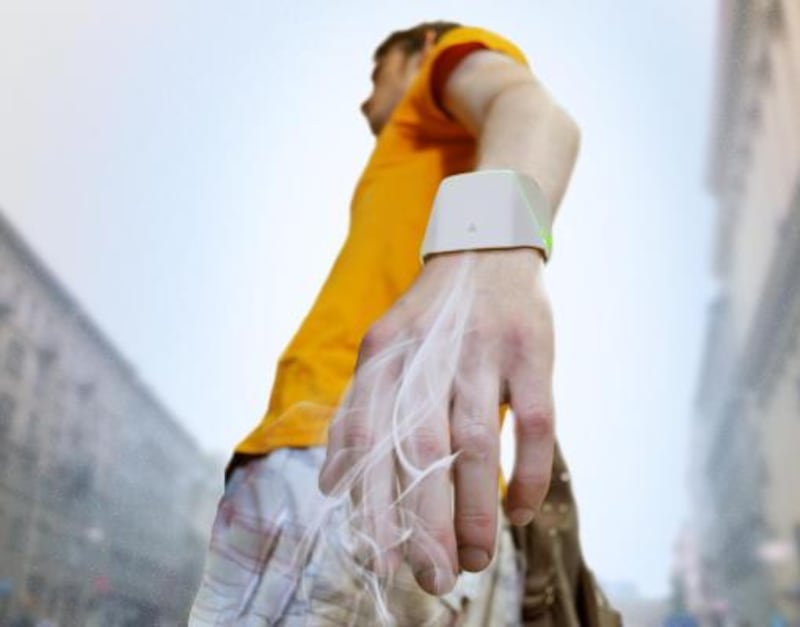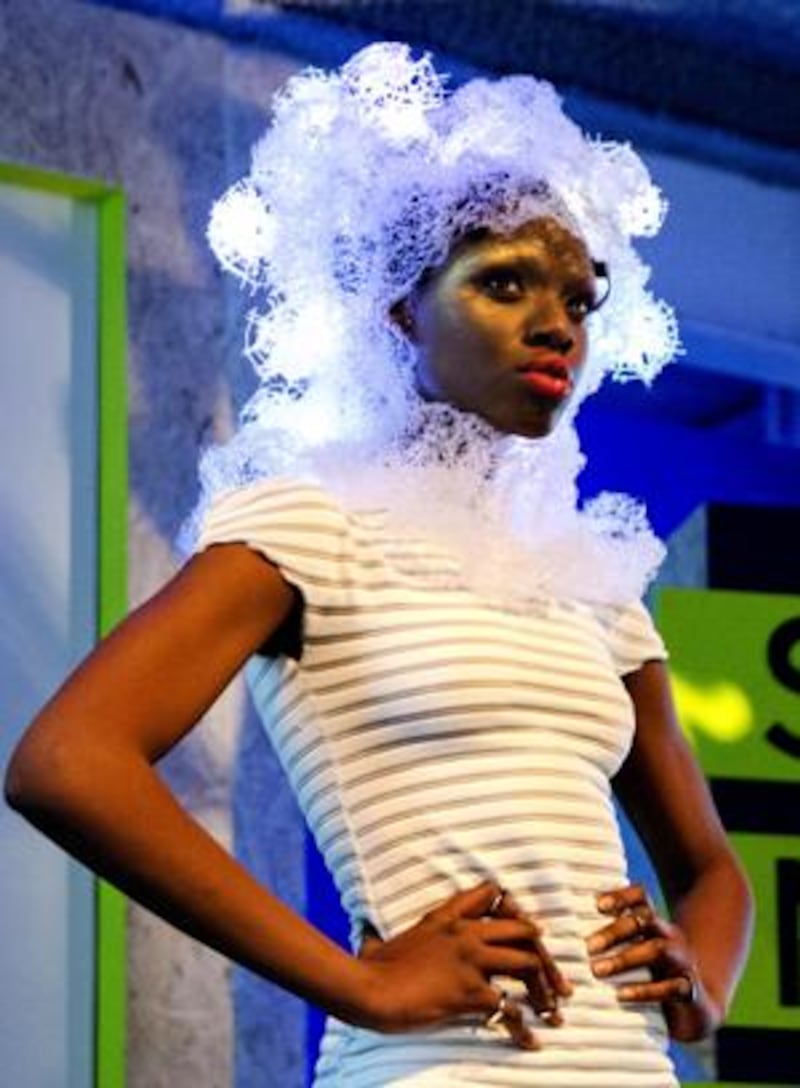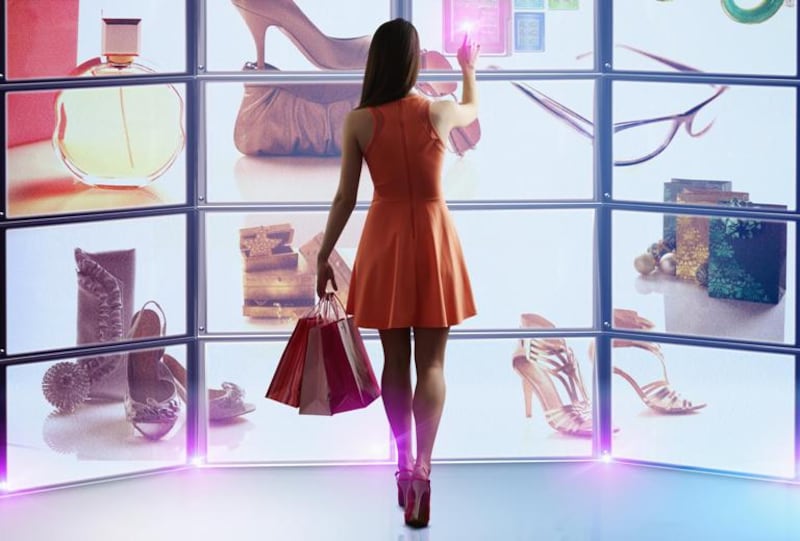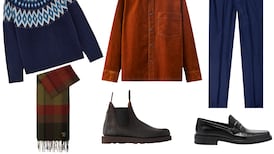IN 5 YEARS’ TIME
3D printed fashion:
Like or loathe it, 3D printed garments are the next big thing in the fashion world. It is likely you imagine 3D printed fashion to be a bit more scratchy than sexy, but as more and more materials for 3D printing become available, the clothes will adopt the look and feel of fabric, such as this dress by designer Titania Inglis (left).

Hidden purpose jewellery:
Finally, some “wearable tech” that’s actually wearable. Cuff, a start-up company based in San Francisco, has launched a stunning jewellery range with technology subtly embedded within each piece, such as a two-way communication device that allows you to alert friends and family nearby if you ever find yourself in danger.
IN 10 YEARS' TIME
Customised textiles: Through the combination of workmanship and technology, we will be wearing a range of materials that never existed before.
The designers behind Proenza Schouler, Lazaro Hernandez and Jack McCollough, are already paving the way in this regard by creating innovative, experimental textiles with car and spaceship manufacturers, while still maintaining wearable, classic looks. For their autumn winter 2014 collection, they introduced a concept of "flocked" (furry, fluffy velvet) marbleised print and it looked fabulous (right).
Wifi hotspot: The time is coming when we won't have to dash into Starbucks to mooch their free wifi when something urgent comes up. Wifi will be inbuilt into clothes, making us all walking, talking hotspots. A brand, byBorre, has created the BB.Suit, a 3D knitted onesie with wifi hotspot and music library. As the process of meshing wires and fabric together becomes more refined, more wifi clothing options will become commercially viable.
IN 15 YEARS’ TIME

Wearable air purifiers:
With pollution on the rise, it’s inevitable that we’ll eventually have our own personal air purifiers to protect us from the dirty city air we breathe on a daily basis. Russian design student Alexandr Kostin came up with the concept of Hand Tree (right), which is a bangle that can automatically monitor the environment, take in contaminated air, filter it, and release clean air back into the atmosphere. You may be sceptical but when that Captain Planet x Chanel capsule collection sells out in 2040 don’t say you weren’t warned.
IN 20 YEARS’ TIME
Evolution of flight:
A London based fashion technology company, Studio XO, has created a flying costume for Lady Gaga and dubbed it the Volantis. The people behind the company believe this could be the beginning of the evolution of flight gear for humans. Co-founders, Benjamin Males and Nancy Tilbury, are revolutionary in the area of fashionable technology and have some mind-blowing creations to their name, from a digital mermaid bra for Azealia Banks with crystals that lit up in time to her music, to a digital helmet for Win Butler of Arcade Fire that projected Prince’s face over his. If anyone can bring fashionable flying technology to mainstream consumerism, it’s these guys.

You read my mind:
At a recent Wearable Technology fashion show in Manhattan, a company called Sensoree showcased a knitted 3D printed brain sensor, known as the NEUROTiQ (below), and designed by Kristin neidlinger, that maps thoughts and displays brain activity through colour. Sensoree is researching ways in which people will visually express their feelings through their clothes.
With continued exploration and experimentation into the sensory computer interface, the potential this has is somewhat frightening.
In 20 years, we could be wearing fashionable headwear that might map and verbalise our thoughts.
SHOPPING of the FUTURE

SHOPPING IN 5 YEARS' TIME
3D body scanners: Imagine having a perfectly fitted bespoke outfit tailored completely to your body's shape and size with zero measurements being taken. In Australia, this has already become a reality. An online tailor, InStitchu, and a tech start-up, mPort, have collaborated to create tailored suits via a 3D body scanner. Customers can pop into a 3D scanner where their exact measurements are recorded and logged in to their InSitchu profile. From here, they can go to their profile and customise the style of suit they want. The order is then sent to a team of expert tailors along with their scanned measurements and the whole process takes a few weeks.
SHOPPING IN 10 YEARS' TIME
Interactive window shopping: Within a decade a closed shop mightn't necessarily mean you can't buy. Some retailers are offering customers the opportunity to view interactive touch screen catalogues 24 hours a day (above) while allowing them to make purchases on their cell phone.
The magic mirror: This could be the most hassle-free way of trying on clothes. All that's involved is standing in front of a digital screen and picking an interactive virtual outfit to try on. It gives a 3D 360-degree view of the clothes on the screen, so customers can get an accurate idea of the fit and appearance of the outfit. This makes the world of online shopping more accessible while maintaining the real shopping experience.
SHOPPING IN 15 YEARS' TIME
Emotion analysis: In 15 years, retailers will be able to track your emotions as you shop. A San Diego start-up, Emotient, recently demonstrated software that can gauge people's emotions and turn it into usable data for stores to analyse. For example, if a person is walking around the store and looks unhappy a retailer will know that this part of their store needs work and vice versa.
SHOPPING IN 20 YEARS' TIME
Same day delivery drones: Although there was some confusion over Amazon's recent attempt at using drones to deliver packages, it is quite feasible that 20 years from now this will be how online shopping will be dispatched. Other companies such as DHL are also working on delivery drones and Amazon is apparently testing its aerial vehicles.











